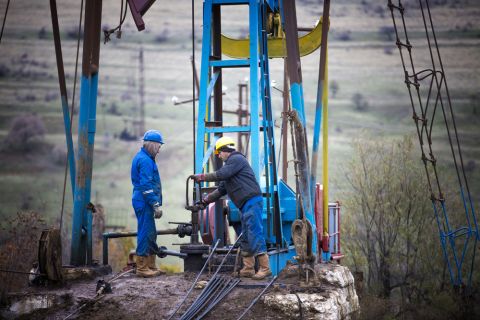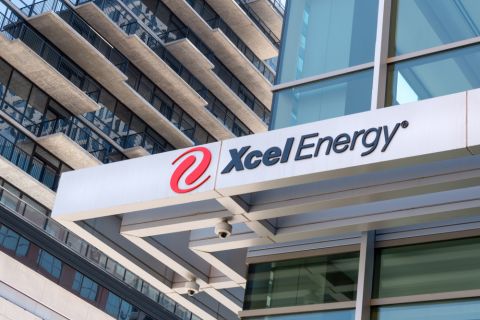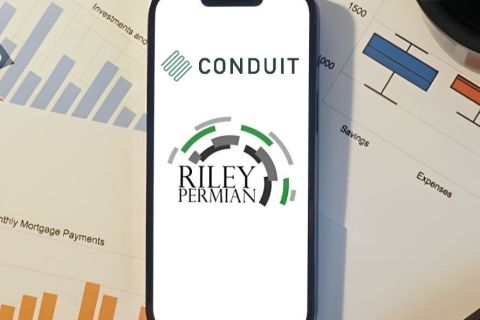From subsea contracts to a host of rig extensions, below is a compilation of the latest headlines in the E&P space.
Activity headlines
Shell hits with Pensacola in North Sea
Deltic Energy said Feb. 8 the Shell-operated Pensacola find in the southern North Sea could represent one of the area’s largest natural gas discoveries in over a decade.
The company said the well confirmed pre-drilling P50 estimates of 300 Bcf of estimated ultimate recoverable reserves.
CEO Graham Swindells said in a news release that Deltic believes the Pensacola discovery will open a new play in the mature basin.
Well 41/051-2, drilled by Noble Resilient, found gas and oil in the primary Zechstein Hauptdolomite carbonate target interval. The well encountered the top Hauptdolomite reservoir and confirmed a reservoir thickness of 18.8 m with better-than-expected porosity averaging 16%.
As planned, the well penetrated the edge of the Pensacola structure in a down dip location and has proven a substantial hydrocarbon column, Deltic said.
Shell operates License P2252 with 65% interest on behalf of Deltic with 30% interest and ONE-Dyas with 5%.
Aker BP wildcat disappoints
The Norwegian Petroleum Directorate announced Feb. 10 that Aker BP’s wildcat well 25/10-17 in PL 867B in the Norwegian North Sea contacted uneconomic quantities of oil.
The Scarabeo 8 drilled the well in 116 m water depth about 12 km north of the Ivar Aasen Field. Preliminary estimates are that the discovery holds between 0.5 MMcm and 1.4 MMcm of recoverable oil equivalent and that the discovery is not profitable at the present time. The well was not formation-tested, but data acquisition and sampling were carried out.
Contracts and company news
Expro snaps up DeltaTek
Expro announced Feb. 9 it had acquired Aberdeen-based well construction cementing specialists DeltaTek Global.
Expro CTO Steve Russell said the purchase expands Expro’s well construction cementing capabilities through DeltaTek’s open water cementing systems and techniques.
Subsea7, DeepOcean win Equinor contracts
Subsea7 announced on Feb. 10 Equinor had awarded consortium Subsea7 and DeepOcean a pair of contracts for the Irpa and Verdande field developments in the Norwegian Sea.
The Irpa subsea tieback project, located in 1,350 m water depth, will connect Irpa with the Aasta Hansteen FPSO about 80 km away. The contract scope includes engineering, transportation and installation of a monoethylene glycol pipeline, a production riser, umbilical, subsea structures and tie-ins.
The Verdande subsea tieback project in the Nordland Ridge area, involves a subsea tieback to the existing Skuld field and Norne FPSO facilities. The contract scope includes engineering, transportation and installation of a 7.5-km pipe-in-pipe production pipeline, umbilical, flexibles, subsea structures and tie-ins.
Subsea7’s Stavanger, Norway offices will carry out project management and engineering. Fabrication of the pipelines will take place at Subsea7’s spoolbase at Vigra, Norway. Offshore operations are planned to take place in 2024, 2025 and 2026 using both Subsea7’s and DeepOcean’s fleet of vessels.
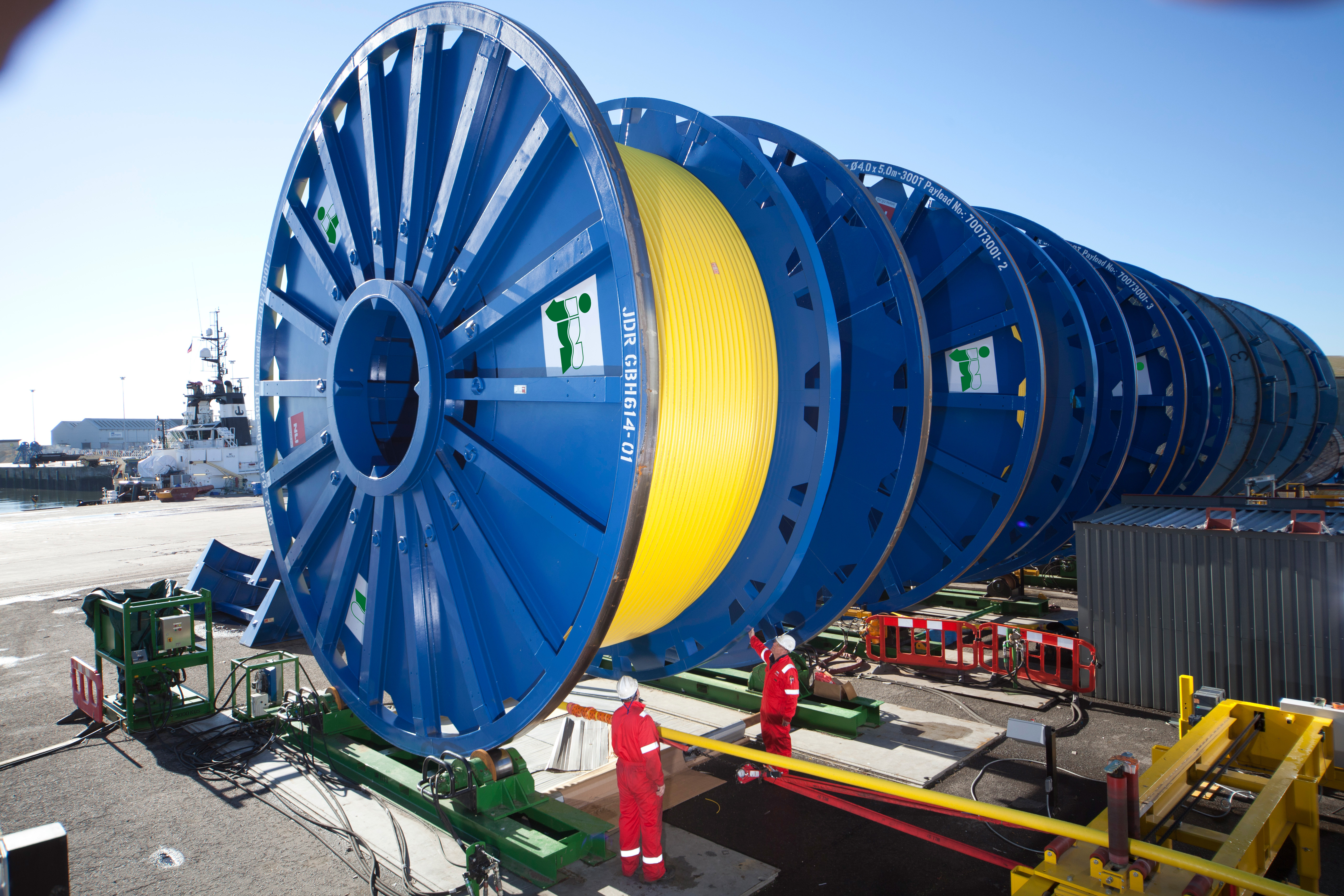
JDR announced on Feb. 9 it had won a contract from Petrogas E&P Netherlands to supply two umbilicals for the A15 and B10 offshore conventional gas fields in the Netherlands. The fields, each in water depths of 115 ft, have estimated recoverable reserves of 17 MMboe.
JDR will engineer, design and manufacture two subsea umbilicals that are 10 km to 13 km in length to provide vital power to two new platforms located at the A/B shallow gas field.
JDR will also deliver topside umbilical termination unit pull-in heads, hang-off bodies and umbilical termination assemblies for the project. JDR will manufacture the umbilical, topside terminations and additional subsea equipment at the Hartlepool, U.K. facility and the hydraulic hoses and LV cables in JDR’s Littleport facility. When complete, the umbilicals will be attached onto 9.2 m delivery reels in Hartlepool and loaded onto an installation vessel to be taken offshore. The full scope of work will be delivered by the beginning of July 2023.
CGG, TGS awarded Heimdal Terrace OBN survey
CGG and TGS announced Feb. 9 that they had been jointly awarded the acquisition and imaging of a dense ocean bottom node (OBN) multi-client seismic survey in the Balder and Ringhorne areas of the Norwegian Continental Shelf.
The Heimdal Terrace OBN survey, located directly north of the Utsira OBN survey in the North Sea, will span an additional 500 sq km area under receivers (AUR) to increase the contiguous multi-client OBN coverage in the region to 3,778 sq km AUR. The survey area covers a mature part of the North Sea, including the Balder and Ringhorne fields, the Iving/Evra and Enniberg discoveries, and surrounding infrastructure-led exploration areas for potential tiebacks to existing infrastructure.
TGS will be the operator throughout the acquisition phase, which will begin in April 2023, while CGG will apply its proprietary OBN processing and imaging technology, including time-lag full-waveform inversion, to create a 3D volume over the region. The final process deliverables are to be completed by the end of the second quarter of 2024.
TGS wins GoM OBN work
TGS announced Feb. 9 it had signed a letter of authorization to conduct a proprietary sparse OBN survey in the U.S. Gulf of Mexico. TGS said the survey, expected to mobilize in the second quarter of 2023, will last about 100 days.
Transocean updates fleet status
Transocean Ltd. updated its quarterly Fleet Status Report on Feb. 9 with an aggregate incremental backlog totaling $1.9 billion and bringing Transocean’s total backlog to $8.5 billion.
The Deepwater Corcovado won a four-year contract in Brazil for $400,000/d. The Deepwater Orion won a three-year contract in Brazil for $417,000/d. The Dhirubhai Deepwater KG2 won a 910-day contract in Brazil for $439,000/d. The Deepwater Invictus won a three-well contract in the U.S. Gulf of Mexico for $425,000/d.
The Transocean Barents won a one-well contract in the U.K. North Sea for $310,000/d. Options for the Transocean Norge have been added to the backlog at day rates between $414,000 and $424,000. The Development Driller III customer exercised a one-well option in Suriname for $360,000/d. The Deepwater Asgard customer exercised a one-well option in the U.S. Gulf of Mexico for $395,000/d. The Paul B. Loyd Jr. customer exercised an eight-well option in the U.K. North Sea for $175,000/d.
Contracts signed for 3 Borr jackups
Borr Drilling Ltd. announced on Feb. 13 it had been awarded a new contract and two extensions for its premium jack-up drilling rigs Ran, Gerd and Natt, increasing the company's firm backlog by approximately 625 days.
Fieldwood Energy hired jackup Ran for work in Mexico. The firm scope of the contract includes two wells with an estimated duration of 50 days, and one optional well with an estimated duration of 75 days. The firm work has an estimated contract value of $7.5 million, excluding mobilization and demobilization. The contract is expected to commence in June 2023 in direct continuation of the rig's ongoing contact and is expected to keep the rig contracted until the fourth quarter of 2023 when it will start its subsequent contract.
Addax extended the Gerd jackup contract by 10 months, keeping the rig under contract through the end of January 2024. The extension is valued at $40 million.
Eni exercised three well options for jack-up Natt, extending the contract by an estimated 270 days. This extension is expected to keep the rig contracted until the first quarter of 2024 and has an estimated contract value of $22.7 million.
Gemsa re-ups Shelf Rig 141
Shelf Drilling Ltd. announced on Feb. 9 that it had secured a one-year contract extension for the Rig 141 jack-up rig in direct continuation of its current term with Gemsa Petroleum Co. for operations in the Gulf of Suez offshore Egypt.
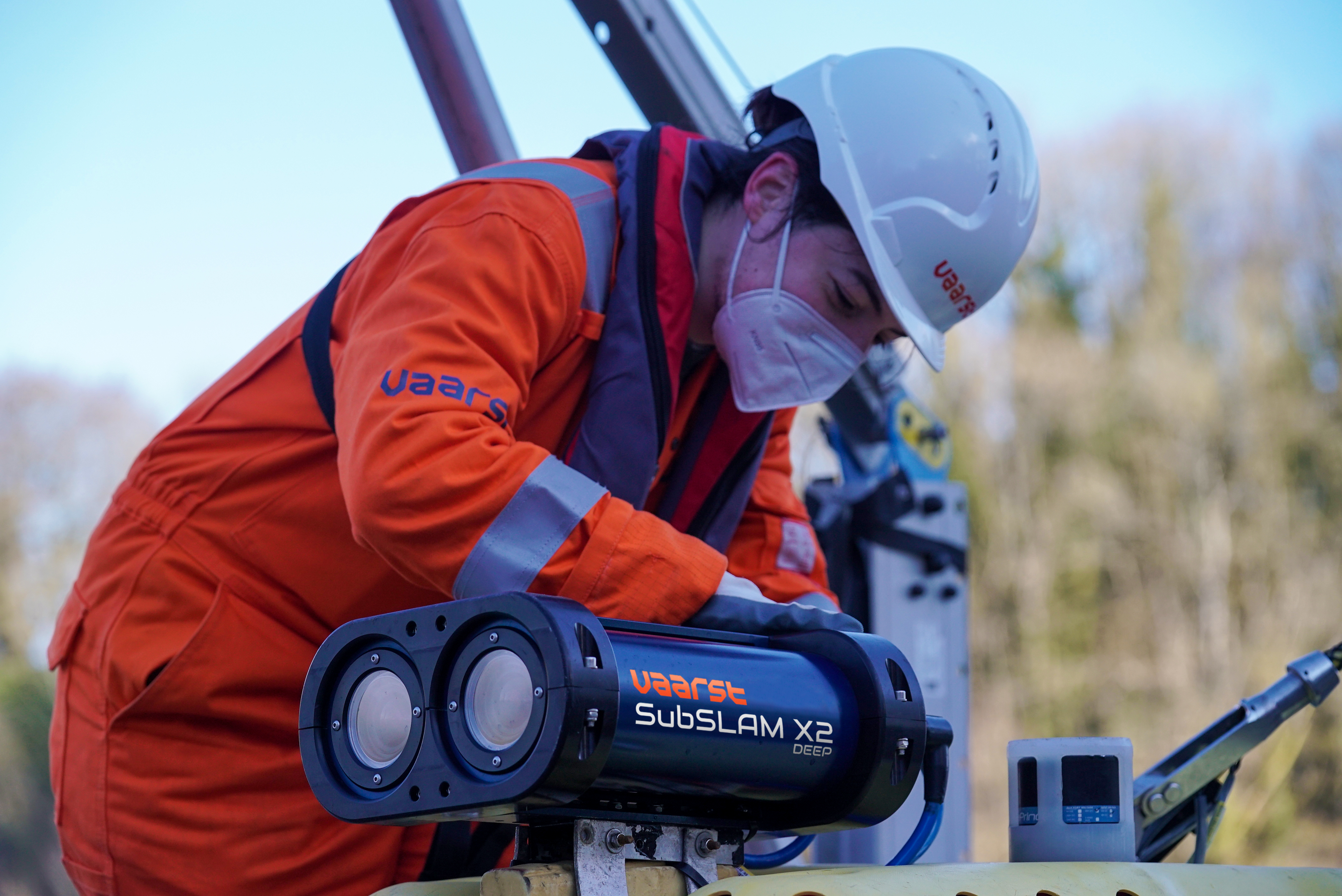
Vaarst launched its next-gen subsea robotic technology in the U.S. market on Feb. 10. The company said its SubSLAM X2 technology addresses time-consuming disadvantages of conventional inspection procedures while delivering detailed, quantifiable data faster than previously available. Applications include asset integrity, subsea metrology for construction projects, decommissioning, pipeline inspection and cable pre-lay inspection.
The SubSLAM real-time intelligent data collection system delivers 4K resolution video with simultaneous high-quality live 3D dense point clouds at sub-millimeter accuracy.
Mounted on any ROV carrying out a visual inspection, SubSLAM can record all data in a single run. Equipped with machine vision sensors and fast onboard processors, 3D reconstructions are modeled while high resolution 4K video footage is captured.
Recommended Reading
OFS Sector Loses Jobs, but Trade Org Says Growth Potential Remains
2024-05-08 - According to analysis by the Energy Workforce & Technology Council, the OFS job market may still have potential for growth despite a slight decrease in the sector in April.
Dividends Declared in the Week of May 6
2024-05-10 - Here is a selection of upstream, midstream and service and supply companies’ dividends declared in the past week.
Berntsen Joins Xcel as Executive VP, Chief Legal and Compliance Officer
2024-05-22 - Rob Berntsen is assuming the role from Amanda Rome, who had been in the position on an interim basis.
Riley Permian Increases Stake in West Texas Power JV with Conduit
2024-05-22 - Riley Exploration Permian increased its ownership in RPC Power, a JV with Conduit Power, to 50% from 35% and has agreed to sell up to 10 MMcf/d of natural gas as feedstock supply for the generation facilities as RPC plans to sell to ERCOT.
Upstream, Midstream Dividends Declared in the Week of July 8, 2024
2024-07-11 - Here is a selection of upstream and midstream dividends declared in the week of July 8.


